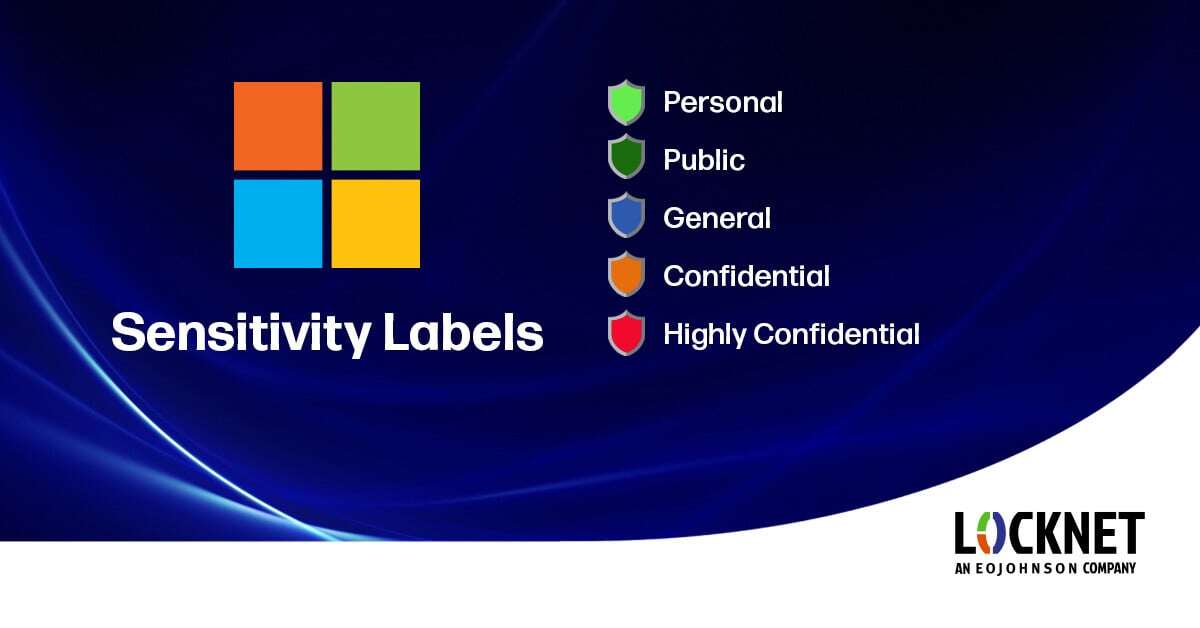Industries We Serve
World Class IT Support & Service
Real People. Right Now.
About Locknet® IT Services
From the first hello, the Locknet® team is dedicated to serving you and your needs.
Real People. Right Now.
From the first hello, the Locknet® team is dedicated to serving you and your needs.


As more workplaces consider adopting tools like Microsoft Copilot, which uses artificial intelligence (AI) to enhance productivity, keeping sensitive data secure is top of mind. Microsoft sensitivity labels offer an effective way to protect information, especially as AI-powered tools analyze and interact with your data. Let’s explore how these labels work and how they can safeguard your files while still enabling integration with Microsoft Copilot.
Microsoft sensitivity labels are like digital “stamps” you can attach to files, emails, and other documents to define how they should be handled. These labels classify information based on its sensitivity and apply rules to protect it. Some sensitivity labels might include:
Sensitivity labels are a key feature of Microsoft Purview, a tool designed to help businesses manage, monitor, and secure their data. By integrating with tools like Microsoft 365 and Microsoft Copilot, these labels ensure your data remains protected when AI tools are in use.
When you apply a sensitivity label to a document or email, it sets rules that govern how the information can be shared, accessed, and used. These rules include:
Sensitivity labels restrict who can view or edit documents. For instance, a "Highly Confidential" label may limit access to only specific users or teams.
Labels can automatically encrypt files, ensuring only authorized users can open them.
A label might add “Confidential” watermarks or headers to documents, reminding users to handle them carefully.
With Microsoft Purview, labels can be applied automatically based on the content. For instance, if a file contains sensitive information like Social Security numbers, it might be labeled as "Highly Confidential" without any manual steps.
Microsoft Copilot is designed to help users work smarter by using AI to summarize, draft, and analyze content across Microsoft 365 apps. While Copilot boosts productivity, it also interacts with your organization’s data, which may include sensitive information.
Here’s where sensitivity labels can be used:
By combining sensitivity labels with Microsoft Copilot, organizations can embrace AI’s productivity benefits without compromising security.
Applying sensitivity labels is simple, customizable, and works seamlessly in Microsoft 365 apps like Word, Excel, Outlook, and SharePoint. There are several ways to apply sensitivity labels:
Manually label a file or emailMicrosoft sensitivity labels can be a helpful tool for protecting your data in a world increasingly driven by AI. When paired with Microsoft Copilot, these labels ensure your data remains secure while still enabling AI to deliver value. Whether you’re drafting a proposal, analyzing a spreadsheet, or sending an email, sensitivity labels can keep your data in the right hands – whether those hands are human or AI.
If you’re a Locknet client implementing Microsoft Copilot into your organization, using sensitivity labels can help balance productivity and security in your workplace. Contact your Technical Account Manager and read our Microsoft Copilot Deployment Guide to learn more about Copilot.
Microsoft

Onalaska, WI Waterloo, IA Wausau, WI Eau Claire, WI Burnsville, MN
You are now leaving locknetmanagedit.com. Please check the privacy policy of the site you are visiting.